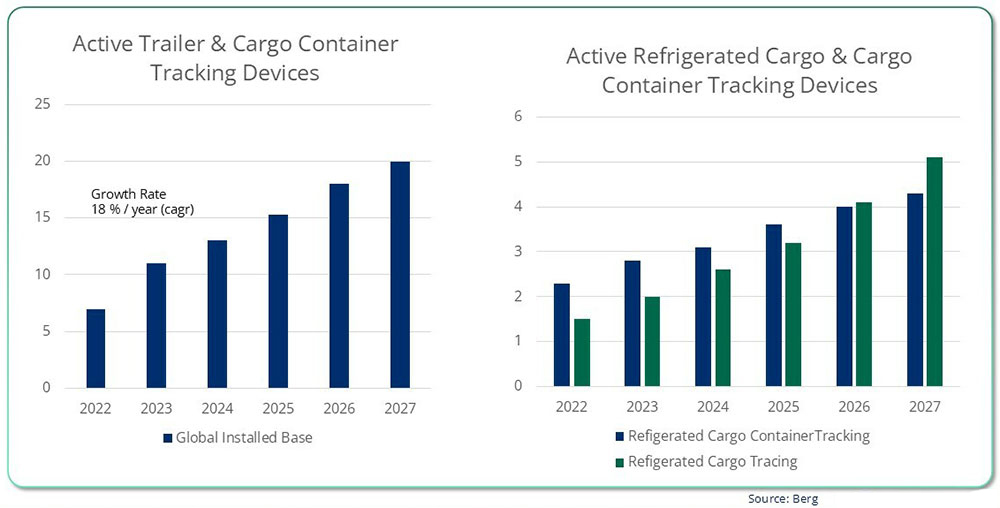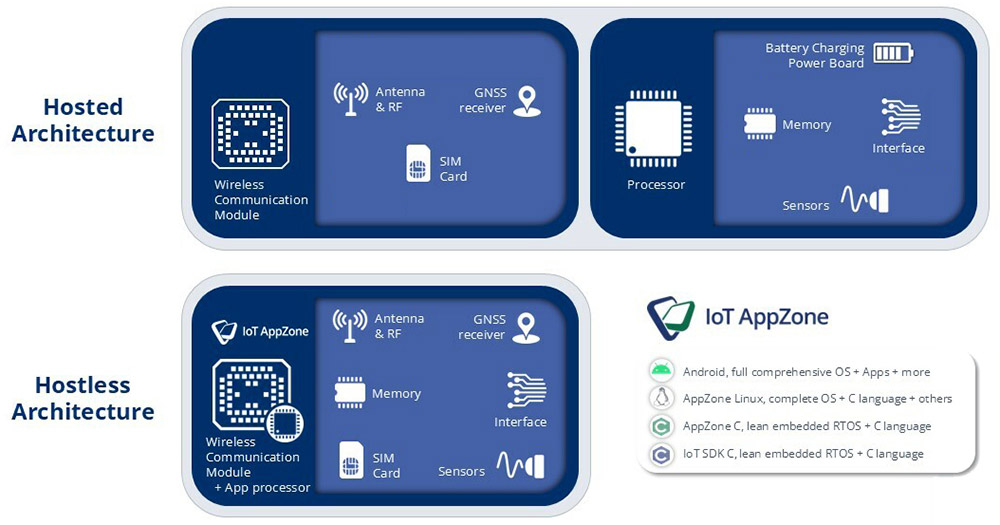Global IoT Asset Tracking Devices: Key Design Choices
By Greg Oppenheim
August 5, 2025
By Greg Oppenheim
August 5, 2025
Estimated reading time: 6 minutes

Internet of Things (IoT) asset tracking is a growing global solution. Businesses utilize tracking to monitor the location and condition of their assets. This improves supply chain transparency and reduces theft. Telematics devices can assist with route planning and monitor fuel use.
New regional regulations require more detailed tracking of goods in transit. Telematics enables cross-border tracking and complies with international logistics standards.
Berg Insight predicts the cargo container tracking market will grow 18% annually, from 8 million units in 2022 to 20 million in 2027.
Designers building global IoT asset tracking devices must consider the device’s purpose and select features that support its function. The specific use case will determine the type of technology to include in the device.

1. Where will the device be installed?
2. What services will the device offer?
3. How will the device connect?
4. Which global navigation satellite systems (GNSS) will the device need?
Most asset tracking devices rely on a connection to a cellular network to exchange data with the cloud. Some devices connect via non-terrestrial satellite (NTN) networks when deployed far from cellular towers and other infrastructure.
GNSS positioning provides high-accuracy location information within 3 to 5 meters. Positioning services based on Wi-Fi access points and cellular base stations deliver accuracy down to a 50-meter range.
The cellular module is a core component of an asset tracking device, accounting for a significant portion of the overall cost. Designing a device and selecting a module to maximize success while minimizing costs is a balancing act.

There are two common types of architecture for an asset tracking device:

The right cellular technology depends on:
For most global IoT asset tracking devices, LTE Cat 1 or LTE Cat M1 is the preferred cellular connectivity option.
To choose the one best suited for your use case, consider the following:
Narrowband IoT (NB-IoT) may be an option for a simple, low-cost, battery-operated asset tracker with limited mobility.

Antenna design is another critical element for asset tracking devices. An asset tracker’s antenna, when placed inside a metal container, encounters challenges that need to be addressed early in the project.
As you seek to optimize your device’s antenna design, keep in mind:
New artificial intelligence (AI) tools, such as the Oxion platform from Ignion, enable IoT device designers to generate a feasibility report for new products. They help evaluate antenna placement, saving time and effort as you aim to maximize your device’s effectiveness.

Telit Cinterion provides a full suite of services, including modules and SIMs, for asset tracking. NExT™, powered by Telit Cinterion, enables reliable and secure connectivity worldwide.
Customers can access application software in the IoT module with our IoT AppZone. Remove unnecessary CPU memory and storage components from your device’s bill of materials (BOM) to create a hostless device architecture.
OneEdge™, powered by Telit Cinterion, offers a customizable and reliable solution for managing asset tracking deployments worldwide. OneEdge is a secure software stack integrated with our IoT modules and cloud services. Connect and manage edge device deployment at scale.
With Telit Cinterion’s connected module packages, you receive module connectivity and the management tools under one contract.